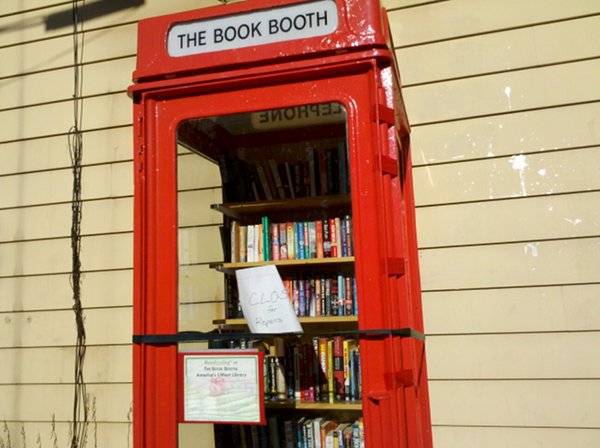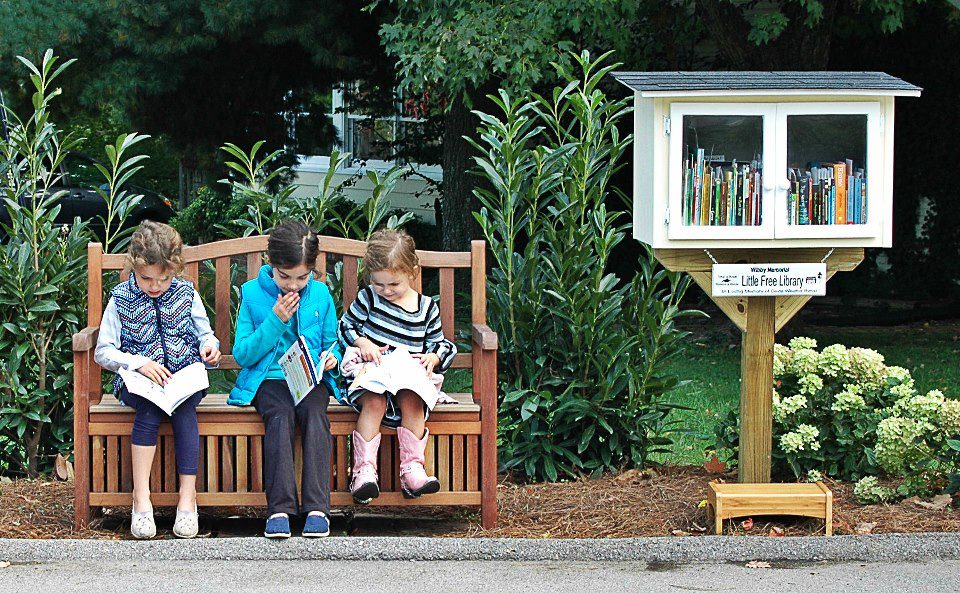It’s not about the books. At the heart of it, neighborhood book exchanges are a DIY tactic for changing a neighborhood. Stewards introduce a neighborhood book exchange in hopes of altering particular aspects of neighborhood life.
But each intervention is different. Stewards install the exchange hoping to impart changes that are unique to their goals and the neighborhoods’ dynamic. As a result, no two neighborhood book exchanges—or community lending libraries, book trading posts, or Little Free Libraries—are exactly alike. They share a common premise, inviting passersby to take a book or leave a book from a publicly accessible container. But each instance is unique.
For the last two years, we have been studying neighborhood book exchanges, concentrating on six in Vancouver, BC. Using a variety of research methods, we studied why and how neighborhood book exchanges are created and used. We interviewed the stewards of each exchange, and our findings suggest that they all sought to change their neighborhood, but their specific goals and approaches, while overlapping occasionally, varied considerably.
Here, we’ll share four different goals that stood out in our interviews with the stewards.
1. Neighborhood Destinations
Stewards often hoped their neighborhood book exchange would become a neighborhood destination. They wanted to create a place that would entice neighbors to spend more time walking around and lingering in the neighborhood. They hoped neighbors would be drawn to visit the exchange regularly.
While several stewards installed their neighborhood book exchange with this in mind, it held different implications for different stewards. For some, a more regular presence of neighbors walking around the area would create more opportunities for neighbors to meet and mingle. And, in effect, improve familiarity and neighborliness. Other stewards thought it would help improve the safety and resilience of the neighborhood. With more neighbors out and about, the neighborhood could be more vigilant and helpful.

Little Free Library in Lakewood, Colorado. Credit: Helen H. Richardson, The Denver Post.
2. Interactive Spaces
Neighborhood book exchanges can be fun and playful. By exchanging books with your neighbors—especially when you don’t know who left that great book you found or who took that favorite book you left—you share in an activity that evokes curiosity or delight. Several stewards thought that this could help create a stronger sense of neighborhood goodwill and amity.
However, exchanging books was not the only activity emphasized; some neighborhood book exchanges are accompanied by other interactive aspects. These neighborhood book exchanges often included noticeboards or chalkboards for passersby to share notices, messages, or drawings. Some include logbooks or mail drops. And some are surrounded by other attractions: stroll through a community garden and visit the book exchange or chicken coop; select a book from the shelf and settle in a seat to read; or challenge a neighbor to a game of chess or checkers on the giant game board.

The Book Booth in Clinton, New York. Credit: Flavorwire.
3. Gathering Places
Many stewards wanted to create a space where neighbors could gather. They installed a book exchange in hopes that it would provide a space for neighbors to meet. Neighbors could convene at the exchange for prearranged gatherings, like Christmas carolling or block parties. Or neighbors could gather more informally, striking up conversations while visiting or passing by the neighborhood book exchange.
As a result, these neighborhood book exchanges were installed in a public or borderline public space—e.g. by the sidewalk on street boulevards or private property—where they could be readily accessed by any member of the neighborhood. For some stewards, this was also a way for the neighborhood to use idle public spaces. They could create a shared neighborhood place in an otherwise unused public space.

Little free library in an old New York City phone booth. Credit: The Atlantic.
4. Sharing Books
And, finally, many of the stewards wanted to share books. They lamented the number of books sitting on shelves waiting to be read or reread. They wanted these books to be shared with others who would enjoy them. A neighborhood book exchange seemed like a perfect solution. It would create an opportunity for neighbors to share books.
Interestingly, the open invitation to share books was rarely misinterpreted as an opportunity to dump undesirable books. The books contributed to the exchange were in remarkably good condition. The occasional visitor would discard a scrappy, wet, or moldy book at the exchange. And some visitors would leave boxes of books or assorted paraphernalia under the exchange. But, by and large, the visitors respected the spirit of the exchange.
In 2011, a strong media narrative emphasizing literacy, community building, and a love of reading emerged as the popular motivations and outcomes of neighborhood book exchanges. However, preliminary findings from our investigation suggest more complex narratives. Stewards create neighborhood book exchanges as a way to impart localized change in their neighborhood. And each exchange varies considerably from steward to steward and neighborhood to neighborhood.
Click here for more information on our study.









